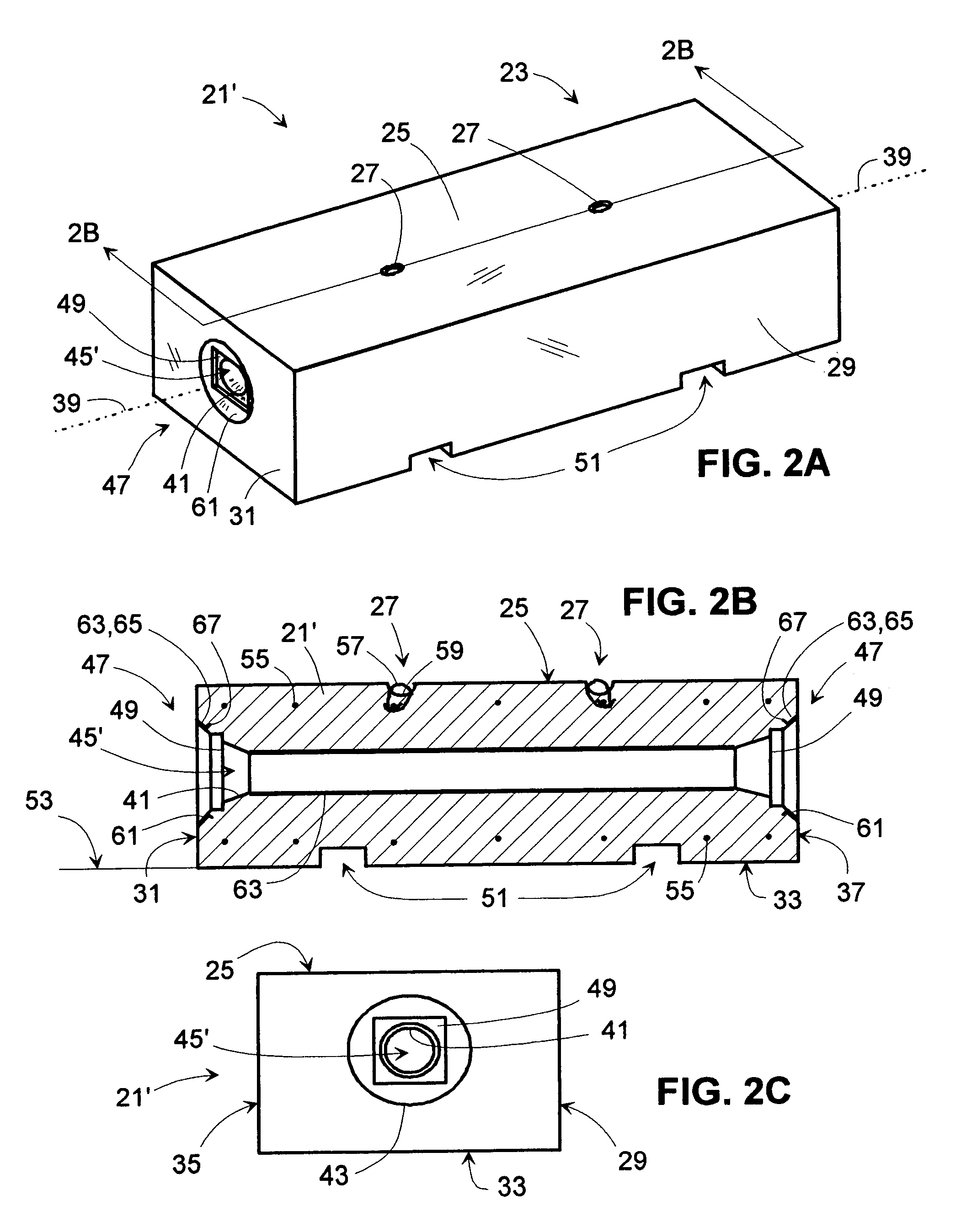Cabled massive security barrier
a security barrier and massive technology, applied in roadway safety arrangements, roads, construction, etc., can solve the problems of not being able to support the high tensile force required, not being portable enough to facilitate relocation, and affecting the safety of people and property, etc., to achieve the effect of convenient transportation, low manufacturing cost, and low cost of manufactur
- Summary
- Abstract
- Description
- Claims
- Application Information
AI Technical Summary
Benefits of technology
Problems solved by technology
Method used
Image
Examples
second embodiment
[0057]FIG. 3A shows a perspective view of a cabled massive security barrier 69, also referred to as a barrier wall 71. The barrier wall 71 includes three masses of composite material 21A′, 21B′, and 21C′ of the second embodiment that are aligned end-to-end longitudinally in a row in forming the barrier wall 71. The two masses of composite material at the opposite ends 81 of the barrier wall 71 comprise a first end-location mass 83 and a second end-location mass 85. A first means for anchoring cable 97 is shown anchoring cable to the left-most end region 47 of the barrier wall 71, at the left-most end of the first end-location mass 83. This first means for anchoring cable 97 is shown comprised of four tension cables anchored to a steel plate at the end region 47 of end-location mass 83.
[0058]FIG. 3B shows the same barrier wall 71 (the same cabled massive security barrier 69) as in FIG. 3A, except the nearest two masses 21A′ and 21B′ are shown having a lateral offset 111 (horizontally...
fourth embodiment
[0068]FIG. 8A shows an end view of an end region 47 of a mass of composite material having a plurality of two tunnels 123. Each tunnel 45 ends with an opening located at a recessed region 49, wherein each tunnel opening and its associated recessed region are identical to those shown in FIG. 1C.
fifth embodiment
[0069]FIG. 8B shows an end view of an end region 47 of a mass of composite material having a plurality of four tunnels 123′. Each tunnel 45 ends with an opening located at a recessed region 49, wherein each tunnel opening and its associated recessed region are identical to those shown in FIG. 1C. When using masses of composite material to build a barrier wall, each mass having one or a plurality of tunnels within them, not all of the tunnels in those with a plurality of tunnels need contain portions of tension cable comprising an overall cable system; however, having masses with a plurality of tunnels provides many options in designing, providing, and perhaps incrementally assembling an effective cable system to hold the masses together.
[0070]FIG. 9A shows two masses of the fourth embodiment 123A and 123B aligned end-to-end and interconnected (interlinked) using a loop of tension cable 125 looped through the two respectively aligned tunnel passageways 45 and 45. The two overlapped s...
PUM
 Login to View More
Login to View More Abstract
Description
Claims
Application Information
 Login to View More
Login to View More - R&D
- Intellectual Property
- Life Sciences
- Materials
- Tech Scout
- Unparalleled Data Quality
- Higher Quality Content
- 60% Fewer Hallucinations
Browse by: Latest US Patents, China's latest patents, Technical Efficacy Thesaurus, Application Domain, Technology Topic, Popular Technical Reports.
© 2025 PatSnap. All rights reserved.Legal|Privacy policy|Modern Slavery Act Transparency Statement|Sitemap|About US| Contact US: help@patsnap.com



